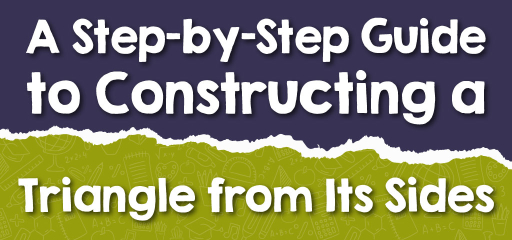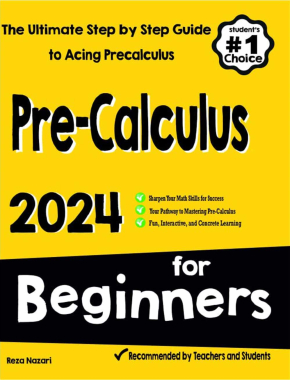A Step-by-Step Guide to Constructing a Triangle from Its Sides

- A straightedge or ruler.
- A compass.
- A pencil.
Examples
Practice Questions:
- What conditions must three side lengths fulfill to construct a triangle?
- After constructing a triangle using three side lengths, how can you ascertain if it’s a right triangle?
- Using side lengths \(4 \text{ cm}\), \(6 \text{ cm}\), and \(11 \text{ cm}\), is triangle construction feasible?
- The sum of any two side lengths must exceed the third. This principle is termed the triangle inequality theorem.
- Post-construction, apply the Pythagorean theorem to all sides. If the square of the longest side equals the sum of the squares of the other two, it’s a right triangle.
- No. The combined lengths of the shorter sides, \(4 + 6 = 10 \text{ cm}\), falls short of the longest side’s length \(11 \text{ cm}\). Triangle construction isn’t possible with these measurements due to the triangle inequality theorem.
Original price was: $109.99.$54.99Current price is: $54.99.
Original price was: $109.99.$54.99Current price is: $54.99.
Original price was: $114.99.$54.99Current price is: $54.99.
Related to This Article
More math articles
- What to Look for in Graphing Calculators?
- How to Use Area Models to Factor Variable Expressions?
- 10 Most Common 7th Grade PARCC Math Questions
- The Ultimate OAR Math Course (+FREE Worksheets)
- From Tables and Graphs to Equations: How to Master Proportional Relationships
- The Challenge for The Future of Math Education
- How to Score High in SAT Math?
- Is a Calculator Allowed on the CBEST Test?
- The Ultimate ASVAB Math Course (+FREE Worksheets & Tests)
- How to Use Order of Operations? (+FREE Worksheet!)




























What people say about "A Step-by-Step Guide to Constructing a Triangle from Its Sides - Effortless Math: We Help Students Learn to LOVE Mathematics"?
No one replied yet.